Suchergebnisse für "Factsheet: Energietechnologien gestalten, die für alle sinnvoll und nutzbar sind"
EnerPHit-Grünkonzept - Modernisierung eines Gründerzeitgebäudes mit Anwendung eines Aerogel-Dämmputzes
In diesem Demonstrationsvorhaben wurde eine umfassende Modernisierung im gründerzeitlichen Gebäudebestand beispielgebend für die Randbedingungen einer regionalen Schutzzone umgesetzt. Durch die Anwendung des Aerogel- Hochleistungsdämmputzes wurde eine gründerzeitliche Fassadendämmung im Rahmen einer hocheffizienten, umfassenden Sanierung bei gleichzeitiger Erhaltung des Fassadenbildes umgesetzt.
Optimiertes Regelungs- und Betriebsverhalten thermisch aktivierter Gebäude zukünftiger Stadtquartiere (ÖKO-OPT-AKTIV)
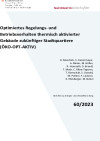
Entwicklung und Simulation skalierbarer, verteilter Regelstrategien zur Nutzung der Speicherwirkung thermisch aktivierter Bauteile in Gebäuden zukünftiger Stadtquartiere bei deren Energieversorgung durch eine Energiezentrale.
Schriftenreihe
60/2023
D. Muschick, V. Kaisermayer, A. Moser, M. Gölles, R. Heimrath, D. Brandl, T. Mach, C. Ribas-Tugores, T. Ramschak, S. Oswald, M. Polster, F. Lackner, K. Eibisberger, M. Nebel
Herausgeber: BMK
Deutsch, 76 Seiten
Downloads zur Publikation
Energiespeicher Beton: Thermische Bauteilaktivierung. Planungsleitfaden Einfamilien- und Reihenhäuser
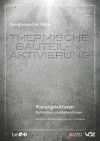
Schriftenreihe
9/2016
Felix Friembichler, Simon Handler, Klaus Krec, Harald Kuster
Herausgeber: BMVIT
Deutsch, 122 Seiten
Downloads zur Publikation
DALEC - Day- and Artificial Light with Energy Calculation
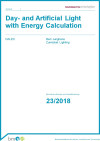
Entwicklung eines Online-Konzeptanalysetool, welches trotz einer einfachen Handhabung und kurzen Berechnungszeiten, die komplexen lichttechnischen und thermischen Vorgänge in einem Gebäude abbildet und Heiz-, Kühl- und Kunstlichtbedarf anschaulich bewertet. Zudem wurde das Nutzerverhalten berücksichtigt und visuelle und thermische Komfortkriterien analysiert.
Schriftenreihe
23/2018
Bert Junghans
Herausgeber: BMVIT
Deutsch, 41 Seiten
Downloads zur Publikation
solSPONGEhigh - Hohe solare Deckungsgrade durch thermisch aktivierte Bauteile im urbanen Umfeld

Im Forschungsprojekt solSPONGEhigh wurde die intensive Nutzung von thermisch aktivierten Bauteilen (TABs) als zusätzlicher thermischer Speicher in verschiedenen Gebäuden unter vorrangigem Einsatz von Solartechnologien untersucht. Die Arbeitshypothese ging davon aus, dass durch die Aktivierung und Nutzung der bauteilimmanenten thermischen Speicher eine Deckung des Gebäudeenergiebedarfs mit Solartechnologien von bis zu 100 % erreicht werden könnte.
Schriftenreihe
20/2018
Heimrath, Lerch, Ramschak, Mach, Fink
Herausgeber: BMVIT
Deutsch, 112 Seiten
Downloads zur Publikation
Innovative Konzepte zur Versorgung großvolumiger städtischer Gebäude/Quartiere mit PV und Geothermie
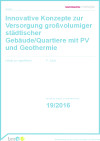
Schriftenreihe
19/2016
F. Zach
Herausgeber: BMVIT
Deutsch, 83 Seiten
Downloads zur Publikation
Optimierung der SOLARenergienutzung in URbanen Energiesystemen (URSOLAR)
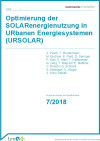
URSOLAR stellt EntscheidungsträgerInnen eine Roadmap zur integrierten urbanen Solarenergie-nutzung zur Verfügung. Es wird aufgezeigt, wie Photovoltaik (PV) und Solarthermie angepasst an infrastrukturelle und rechtliche Gegebenheiten in idealtypischen Stadtquartieren aus ökonomischer, ökologischer und sozialer Sicht sowie unter Berücksichtig von Stakeholder-Interessen optimal ge-nutzt werden können.
Schriftenreihe
7/2018
A. Posch, T. Brudermann, M. Buchner, E. Fleiß, D. Geringer, P. Hart, S. Hatzl, T. Kallsperger, G. Lang, T. Mayrold, E. Meißner, C. Reischl, G. Schnedl, S. Seebauer, K. Stöger, A. Würz-Stalder
Herausgeber: BMVIT
Deutsch, 137 Seiten
Downloads zur Publikation
Photonic Cooling - Effizientere Gebäudekühlung durch Nutzung von Photonik
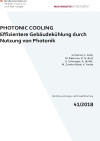
In diesem Sondierungsprojekt wurde der Ansatz des Photonic Cooling zur Gebäudekühlung auf seine praktische und kostengünstige Umsetzbarkeit und im Bezug zu seiner Wirkung bewertet.
Schriftenreihe
41/2018
Gerhard Peharz, Florian Kolb, Martin Beerman, David Neil Bird, Hannes Schwaiger, Rosmarie de Wit, Maja Zuvela-Aloise, Konrad Andre
Herausgeber: BMVIT
Deutsch, 107 Seiten
Downloads zur Publikation
SolCalc: Development of a standardized calculation algorithm for the energy consumption assessment and the energy certification of residential buildings with a solar fraction of up to 100% in combination with biomass boilers and heat pumps
Development of a standardized calculation algorithm for the energy consumption assessment and the energy certification of residential buildings with a solar fraction of up to 100% in combination with biomass boilers and heat pumps
Urban district heating extended – Development of flexible and decarbonized urban district heating systems
Development of innovative urban district heating systems by integration of long-term thermal storage, large scale heat pumps, large scale solar thermal installations, waste heat recovery and analysis and evaluation by simulation. The results of this project will provide templates for technology selection, system design and merit order for new urban district heating areas.
BIMBestand - BIM-based management of existing buildings
The objective of this research project is to develop information requirements and process descriptions for the application of BIM models related to building services in facility management and to demonstrate the lifecycle-oriented use of these models in an open BIM environment. For this purpose, software solutions for the use of IFC in the open-source platform SIMULTAN and building management software are developed and evaluated on the basis of four typical use cases.
PEAR – Test facility for energy efficient automation and control of buildings
The energy demand calculated in the design phase often differs from measured values in the actual building operation. This projects reviews building automation and operation by presenting a solution how to assess energy efficiency of control strategies in the fields of air conditioning systems, concrete core activation and free cooling. The results are implemented in the demonstration building "Post am Rochus".
solSPONGEhigh - High solar fraction by thermally activated components in an urban environment
Within this project the intensive use of thermally activated building elements (TABs) as an additional thermal storage in different buildings, with solar technologies (thermal, PV) preferred for energy supply, was investigated. The aim was to activate and use the thermal storage potential that is immanent in the building elements and thereby achieve solar coverage of the building's heat demand of nearly 100 %.
ecoRegeneration: Development of a "Merit-Order" in order to assess regeneration heat for geothermal probes within urban residential neighbourhoods
In urban residential areas there are not enough active-cooled usages, to use the waste heat of the cooling process as required regeneration heat for geothermal probes; free cooling of the apartments is not sufficient. The project is developing various options (waste heat from commercial uses in the ground floor zones of residential buildings, by using waste heat of data centres, additional installation of heat generation systems for regeneration) within the urban settlement area, business models and is calculating life-cycle-costs of all solutions. The result should be a kind of "merit order" for regeneration heat.
urban pv+geotherm - Innovative concepts for the supply of large volume buildings/ quarters with PV and geothermal energy
The use of renewable energies in inner city locations is mostly linked to higher costs andconsidered as problematic. The aim of this project was to optimize (cost and energy) heating (and where required, cooling) using geothermic and photovoltaic for an urban, densely-built development area. With the project´s findings it will be easier to ecologically and economically plan the use of renewable energies especially in urban areas.
Using buildings as energy storage - Monitoring project: Detached house H and detached house F Energy source wind power – Energy source solar power
Monitoring and comparison of performance of thermally activated building components in two similarly built, inhabited detached houses with different energy sources (wind and solar power). The functionality of energy supply through wind power or solar energy will be investigated as well as the verification of the practicability of self-regulating system control due to building temperature behaviour. The results provide an insight into the calculation assumptions, system control and feasibility of the smart grid technology.
Indicators for urban areas – for construction, operation and mobility in climate-friendly areas
Development and coordination of indicators for energy and ecological evaluations of urban areas based on the Swiss 2000-Watt certification system. The results will be used for the development of a quality assurance system for urban areas similar to the klimaaktiv declaration for buildings and the e5 certification for communities.
FiTNeS - Facade integrated modular Split-heat pump for new buildings and refurbishment
The goal of FitNeS was the development of modular split heat pumps with compact and silent façade-integrated outdoor units for heating and domestic hot water preparation (and optionally cooling in combination with PV). The outstanding features of the concept are a modular design with a high degree of prefabrication and representing a visually and architectonically attractive, economic and sustainable solution for both new constructions and renovations. One of the main development goals is the minimization of sound emissions by means of optimized flow control.
Energy-storage concrete: Thermal Component Activation
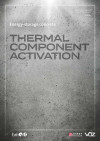
This planning guide provides information on the option of solely heating and cooling small-volume residential buildings by means of thermal component activation (TCA). Concrete instructions on the planning of residential buildings with thermally-activated ceilings are also provided.
Felix Friembichler, Simon Handler, Klaus Krec, Harald Kuster
Herausgeber: BMVIT
Englisch, 122 Seiten
Downloads zur Publikation
Energy-Sponge: The Building as an Energy-Sponge - Electricity In - Heat Out
Innovative, dynamic control concepts had been developed which enable (air) heat pumps in combination with PV- or renewable grid electricity to use the building mass of a multi-familiy house as heat storage. User acceptance had been evaluated and possible business models had been developed.
